Please note: During this time of uncertainty, we are continuing to post stories on the LTV Blog. In doing this, we hope to give you reasons to smile, and a chance to dream of future adventures. All travel mentioned in these posts took place prior to the COVID-19 pandemic and associated restrictions. We ask our LTV family to follow all recommendations of local health and government authorities regarding travel and social distancing. We are all in this together. You can read our full COVID-19 response here.
One of the questions we often get has to do with how and where we produce a weekly RV podcast, our RV Lifestyle YouTube channel videos, our RV travel guides, and my NBC TV syndicated technology reports all while being on the road half to three-quarters of the year.
When we answer that we do the vast majority of our work right from our 2019 Leisure Travel Vans Unity FX, people think we’re spoofing them. They imagine us working with a big production crew, doing most of our work in a state-of-the-art video production studio.
But the truth is, we do it all from our state-of-the-art RV.
Fact is, technology makes it all possible and the technology is now so compact and multi-purposed that, when not in use, it fits easily in a cabinet or one of the outdoor storage boxes on the side of the Unity.
Back when I worked as an on-air TV reporter, it used to be that to produce a news story required a videographer, a sound tech, often a lighting tech, a producer, and me (who my videographers called a “blow-dried microphone stand”).
TV production has sure changed from those days just a few decades ago. First to go was the lighting tech, then the producer, then the sound person. When I left daily TV news at the turn of the century, it was down to just the reporter and videographer. Now, it’s as likely to be just one person, what the industry calls a “one-man band” (though the videographer is just as likely to be female as male).
Fast forward to 2020 and the only similarity to my old days in daily TV news is that we still travel in a van. Instead of a van cramped with bodies and electronic gear and a huge telescoping microwave mast, we travel in a luxurious Sprinter van that has its own kitchen, king-sized bed, bathroom and shower, refrigerator and microwave, and lots of comfy chairs.
To get a report back to the TV studio back then, we used that microwave antenna – which took forever to point back to the station – or a full-fledged satellite truck with a massive dish antenna that we beamed 22,000 miles up to a satellite. It was a very complicated procedure.
It’s been said that in this age of the Internet, anyone can become a media star. And it’s the truth. When Jennifer and I visit RV shows, it seems like every other person we meet now has a YouTube channel. And they all want to know about our tech gear, as do many of our followers who send us email.
I’ve promised a post like this to many people over the past couple of years. Now, with time on my hands during the stay-at-home orders we’re under because of the COVID-19 pandemic, I have the time to do that post. I hope it’s not too techy, and I hope it also inspires you to go out there in your RV and tell your stories using some of these technology tools I’m going to describe.
Cameras
I have bought a lot of cameras over the years. Documenting our trips in video and through still photos is as much a hobby for me as it is my job these days.
I use six different cameras. Now let me point out that clearly, you don’t need all of these. If you’re just starting out, you can do an amazingly excellent job with just your cell phone. But for me, here are my camera tools.
Canon EOS R Mirrorless Full-Frame Digital Camera
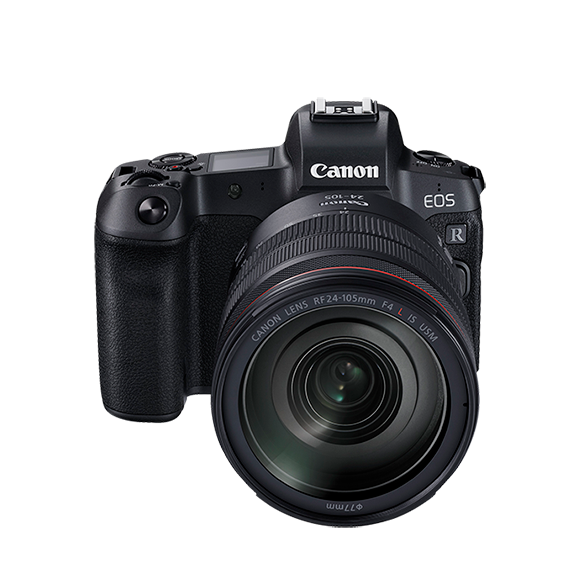
We just got this camera a few weeks ago. The EOS R is one of the most sophisticated cameras I’ve ever used, yet very simple to operate during our on-the-go style of videos. We expect to use it as our main vlogging (video blogging) camera for probably 75% of our video work. I shoot mostly in 4K and the images from the R are so good that I can grab individual frames for stills when needed for our blog or social media. I use a 24-105 mm F4 kit lens with it, and an adapter that lets me put on a 300 mm lens for wildlife shots.
I carry it on a small Manfrotto Pixi EVO mini tripod for most of our hand-held selfie shots. We also mount it on a MeFOTO RoadTrip Classic AL Leather Edition – Titanium tripod. That tripod telescopes down to just over 15 inches and stores in the front wardrobe of the Unity. You can also convert the tripod to a full-size monopod by combining one of the legs with the center column.
For a microphone, I use the RODE VideoMic Pro shotgun mic mounted on the camera’s hot shoe with a RODE Deadcat Artificial Fur Wind Shield.
Canon EOS M-50 Mirrorless Camera
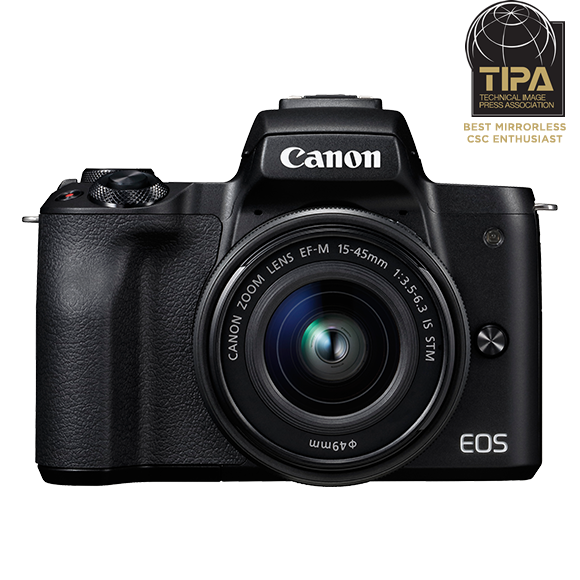
Until we got the EOS R, this was our main camera and we’ve had it for almost three years now. It’s rugged and takes excellent videos. We will use this as a back-up to the EOS R and dedicate it to shooting our on-camera driving shots from inside the van. The EOS M-50 is smaller and lighter than the EOS R and thus better suited for the confined conditions of shooting in the cab area of the Unity.
GoPro Hero 7

This is our action and time-lapse camera. I have a suction mount for it that lets me get driving-down-the road shots from outside the Unity. I have a chest mount for point-of-view shots while doing things like ziplining, white water rafting, or bicycling.
BlackVue DR590W-2CH Dashcam
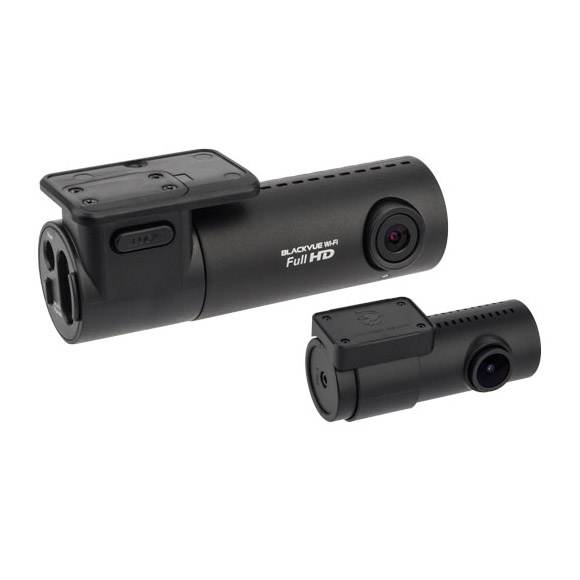
This is a top-of-the-line dashcam system. I love its high quality 1080P front and rear cameras. The front one is mounted at the top of the windshield and is pointed towards the road ahead. I have it wired up so that as soon as we are moving, it starts recording. The rear camera is mounted above and slightly behind us in the middle of the cab and is pointed at our backs for an over-our-shoulder driving perspective. We like these point-of-view road shots and usually get some in on every travel video we do.
Apple iPhone 11 Pro Max

I am daily stunned by the quality of the images – both video and still – that come from this latest generation Apple iPhone. It is now my main still camera, the source of a great many of the photos we use to illustrate blog posts, our travel books, and social media. The three-lens system with wide-angle and telescopic features captures fabulous images. And it also shoots 4K video. In fact, using the DJI Osmo Mobile 3 gimbal, it has produced some of the highest quality video imagery we’ve done.
Dji Mavic Air drone

I’ve had several drones over the years, some much bigger in size and boasting more features. But the compact size of the Mavic Air makes it so easy to carry and it is very easy to fly. I use it for scenic vistas and shots of the RV to give aerial perspectives.
Camera Gear Storage
Where do I keep all this gear? Almost all of it stores snuggly and safely in the hard plastic Pelican 1535 Air Carry-on Case. The case is airline carry-on size and I store it right behind the driver’s seat of the Unity. The drone fits snugly in a small soft carrying case, and I store it at the back of the cubbyhole on the right side of the Unity as you come in the center door.
Computer Gear and Software
What do I use to edit all of that video footage and still images? I use the Apple MacBook Pro 16 inch laptop. I have it loaded with 64 GB of memory and a 1 TB SSD drive. I use LaCie Rugged 4TB portable hard drives to keep all my video and images, and since those hard drives contain all of our work for the almost nine years we have been doing this, I store them in the security safe that we had LTV install in our Unity. For software, I use Adobe Premiere Pro to edit the videos and Adobe Audition to edit our podcast audio files.
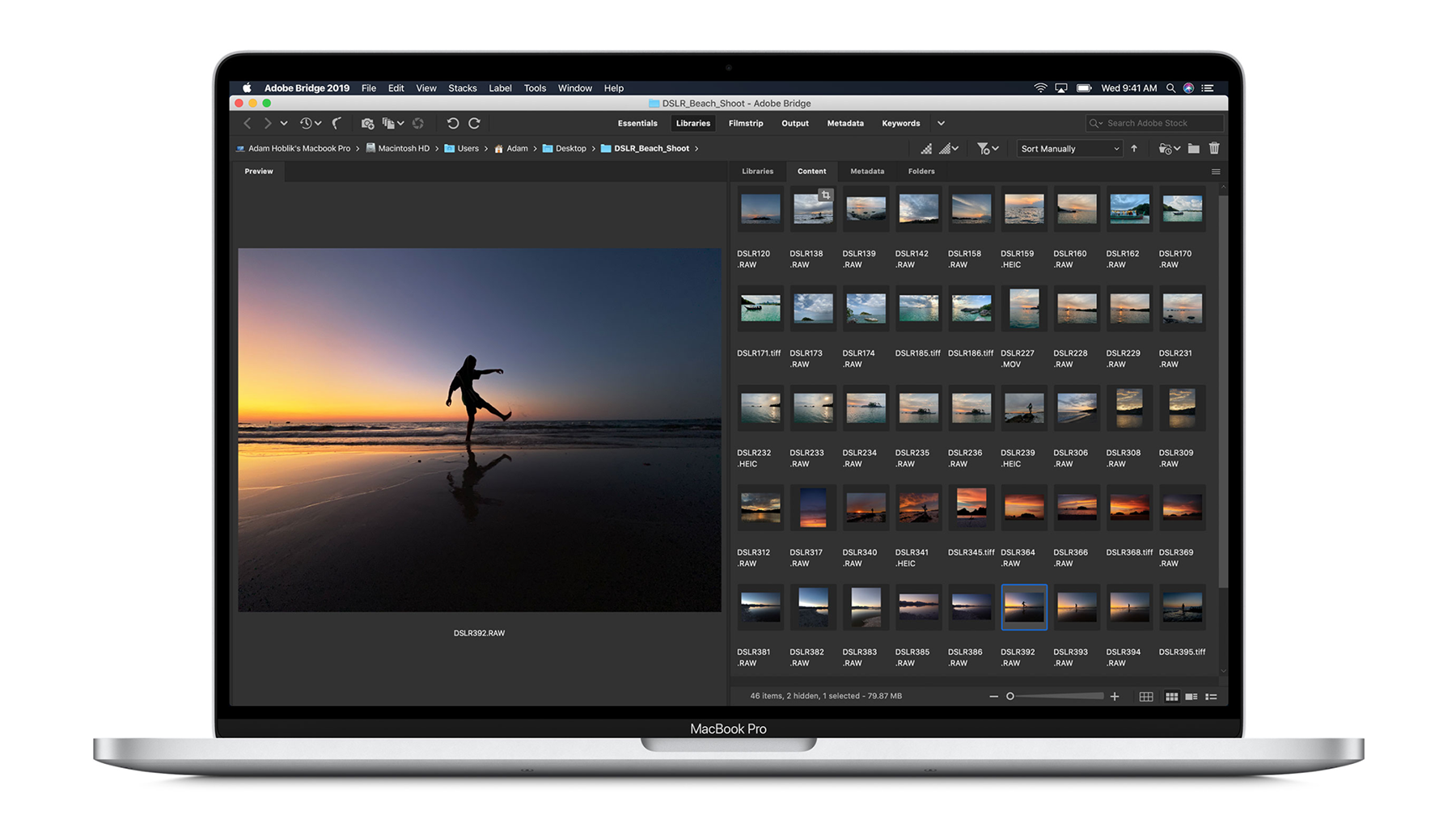
Where do I do this work?
I usually do my video editing in the back of the Unity, where I pull out the special ottoman that stores under the rear sofa. I am a huge fan of this little extra from LTV. Pull up the top of the ottoman, and you have a perfect portable desk.
Podcast Gear
Every Wednesday, we do a weekly podcast called the RV Podcast (available on Apple Podcasts, Stitcher, TuneIn, and all the major podcast apps, as well as our blog, RVLifestyle.com). We record it in the Unity, setting up our gear on the dinette table we can configure from the front lounge/murphy bed. I sit on one side, Jennifer on the other. Between us are our laptops and our podcast gear.
To record the podcast, we use the RODECaster Pro, a portable production studio that integrates a mixer, sound effects player, phone tap for taking phone calls, recorder, and more, all in one box.
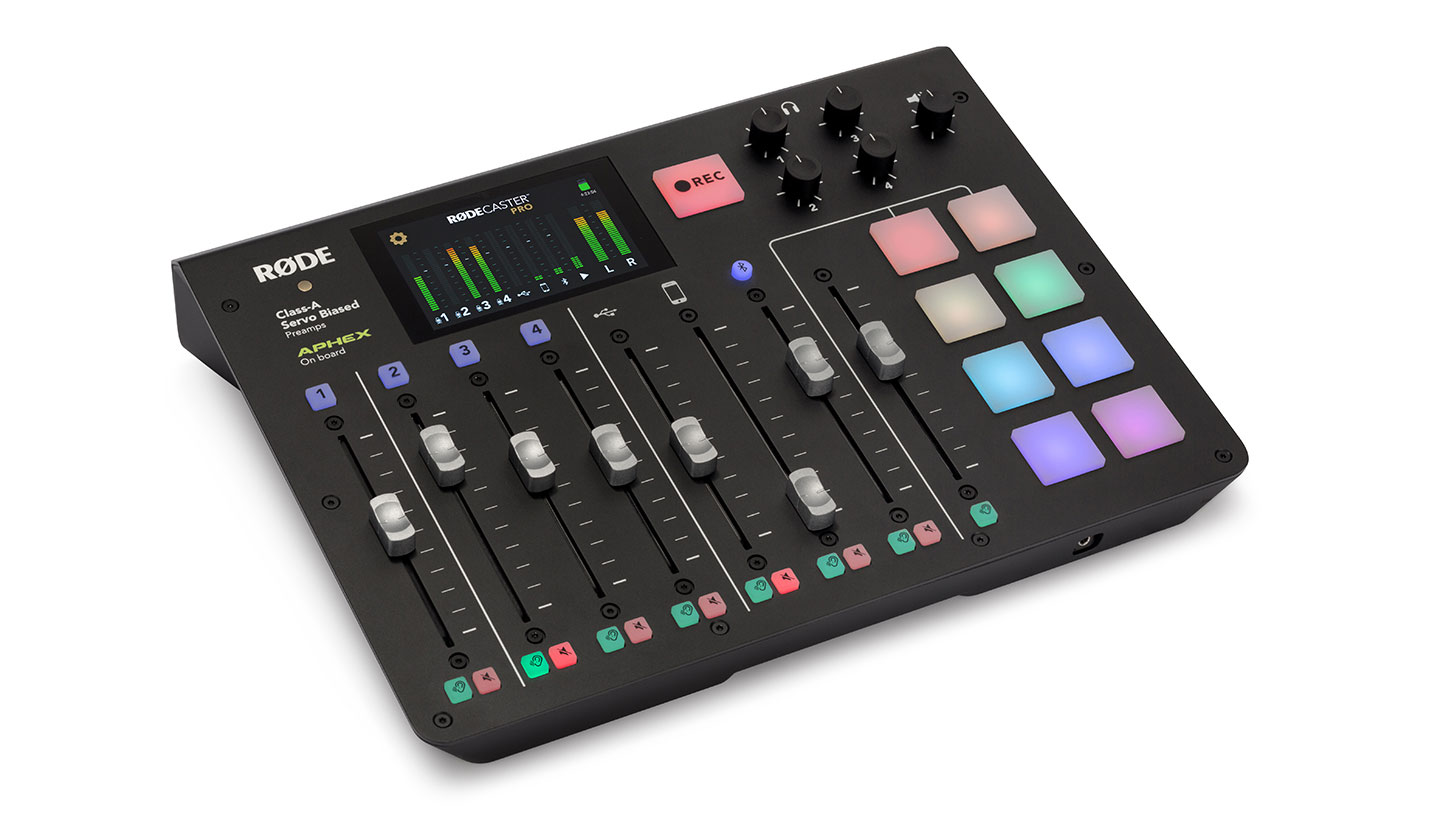
We each use a high-quality professional grade RODE PodMic as our microphones.
The RODECaster Pro – connected to my MacBook Pro – is also used for processing and mixing the audio during our weekly Ask Us Anything livestream on our RV Lifestyle YouTube channel.
For switching between produced videos that we sometimes show in the livestreams, I use the Elgato Stream Deck XL, a keypad-controlled video and audio switcher.
All of the podcasting gear packs away snugly in the SKB Cases iSeries RODECaster Pro Podcast Mixer Compact Case. That case stores behind the driver’s seat right next to my Pelican camera case.
Internet Gear
The key for me being able to work from the road is the Internet.
We ordered our Unity with the integrated Winegard ConnecT 2.0 antenna system. Mounted on the roof, it serves as our TV antenna, a WiFi extender, and a cellular router that links to nationwide 4G LTE networks for reliable, uninterrupted, in-motion and stationary coverage while traveling. It came standard with AT&T, but I went up to the roof and swapped out the SIM so I could use it with my existing data plan from Verizon.
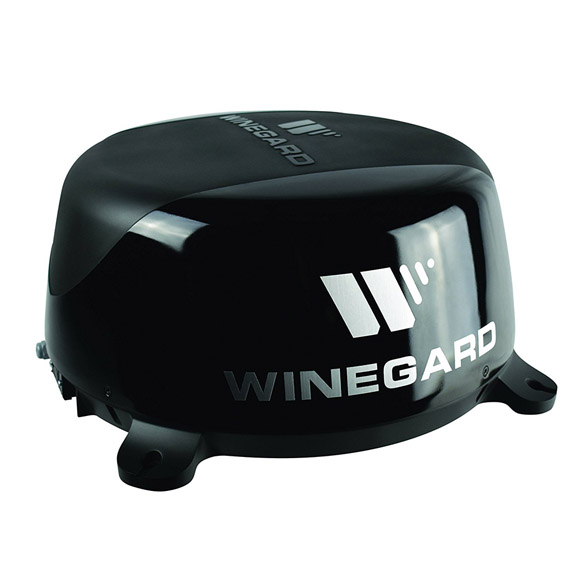
Last summer, I also installed a weBoost Drive X RV cell phone booster kit in the Unity, mounting the outside antenna on the top of our rear ladder.
My plan was to use it to boost reception for our cell phone and Mi-Fi data card as another way to access the Internet if Winegard’s system was not strong in a particular location. It was a bad choice. Truth told, the ConnecT 2.0 does a better job and the weBoost is never needed.
While I’m at it, here’s another Internet mistake I have made. Taking advantage of an awesome deal from AT&T last summer for a device called Togo (it looks just like the ConnecT 2.0, but is white), I installed it up top as well. That way, I figured, when I entered an area where Verizon was weak, I could switch to AT&T. The deal at the time was $360 for unlimited access for an entire year.
In all our travels since then, the problem of a weak Verizon signal happened only once, in the very remote Flamingo Campground at the far southeastern end of Everglades National Park in Florida. AT&T did indeed work when Verizon didn’t, and I felt pretty smug about having that redundancy in my setup.
I had planned to renew the deal with Togo. But last December, AT&T cancelled that deal and, if I was to renew, they now charge a rate that is so high it is prohibitive.
Satellite TV
Alongside the solar panels, the weBoost antenna, the Winegard ConnecT 2.0, and the Togo, there was still a little more room on the roof of our Unity. So I installed a Winegard DISH Playmaker up there. It was so easy. As LTV has two prewired connections available in the roof, I didn’t have to do any drilling to snake the satellite antenna cabling inside (I used the other connector for the weBoost).
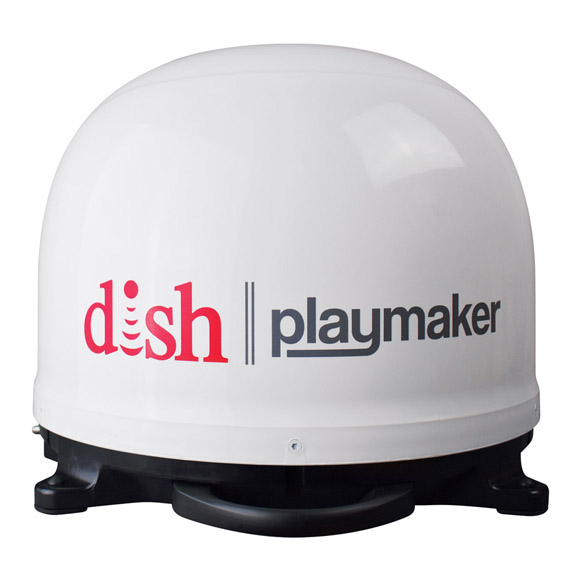
That satellite connection terminates inside the entertainment compartment just behind the passenger seat, and the compact HD satellite receiver from DISH called the Wally fits perfectly.
The receiver connects to the antenna, which automatically acquires the signal. It also works with WiFi so we can stream Netflix, Hulu, and other programming to our TV screens (one in front, one in back – both controlled by a switcher pre-installed by LTV).
So there you go. I know, that sounds like a lot of tech gear.
Truthfully, most people don’t need six cameras, a podcasting studio, and much of the other gear Jennifer and I have. But while it sounds like a lot, it all is amazingly compact and very lightweight, and fits so easily in our Unity.
When I look at the Unity and how we have turned it into a mobile studio for our travel videos and reporting, I am amazed how broadcasting and journalism have changed. We are now able to reach millions of people, live from our RV, anywhere, anytime, by uploading, livestreaming, and sharing audio, video, and photographs, and writing and publishing books and blog posts. That allows us to earn the majority of our income while on the road and enjoying the RV Lifestyle.
That is pretty cool.
Then there are the apps that we use to manage our trips and find campgrounds, boondocking spots, dump stations, and things to see and do along the way. I’ll save that for another post!


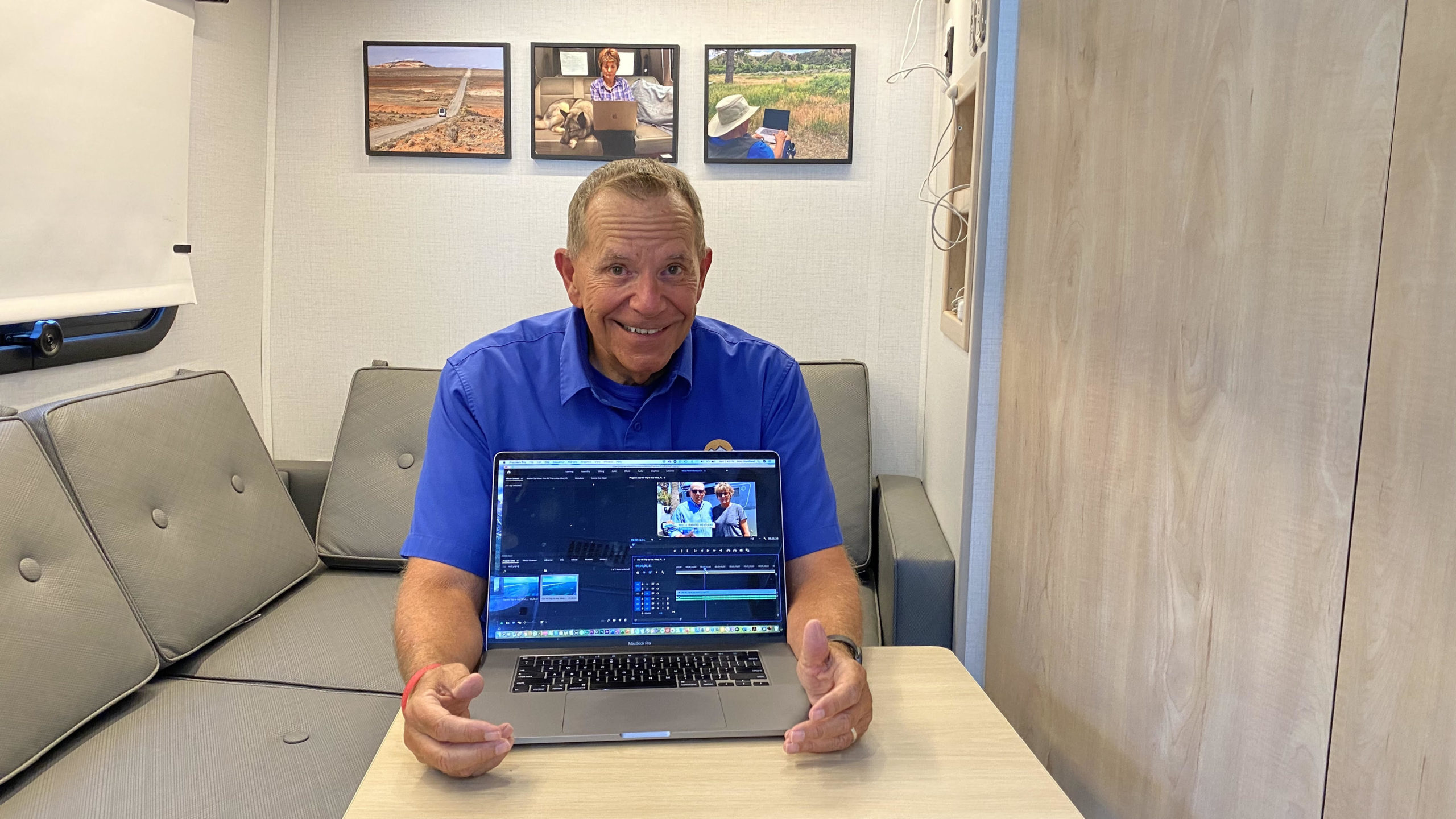
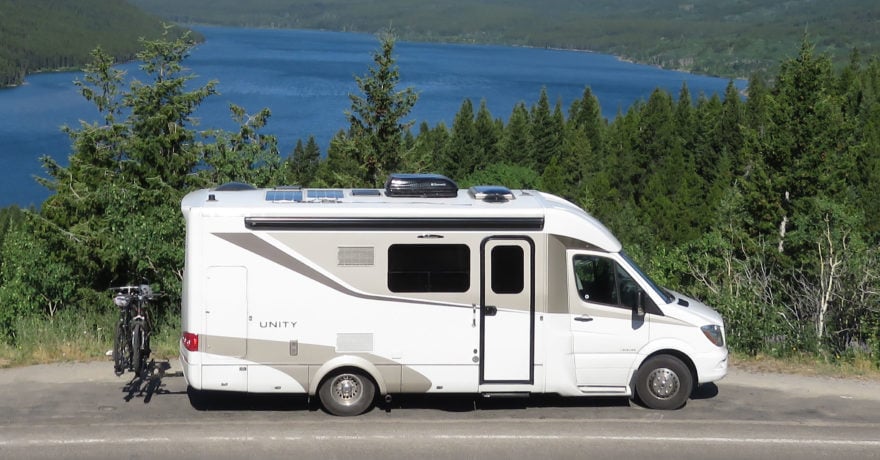
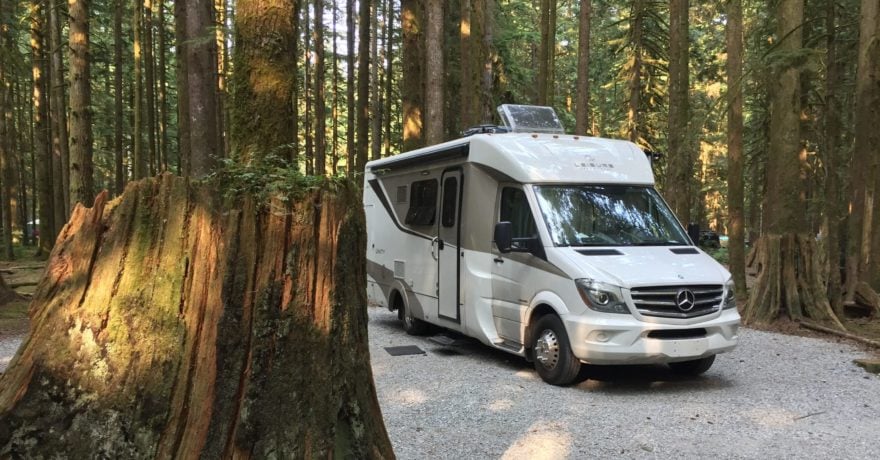
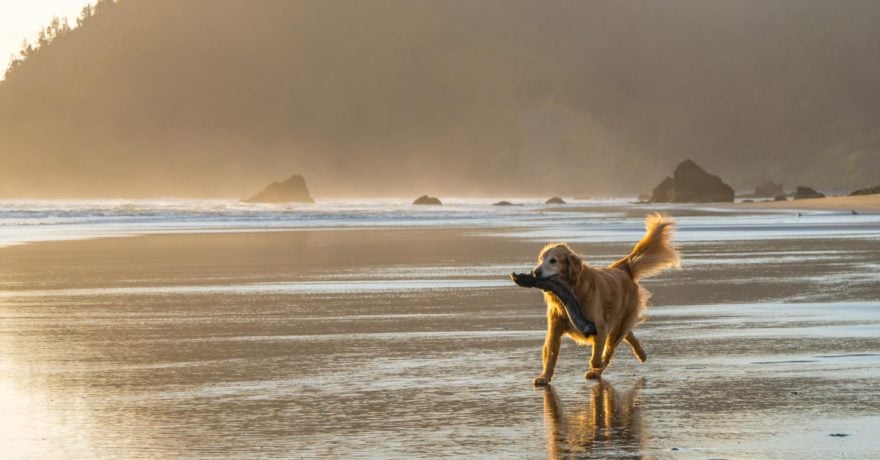
Comments